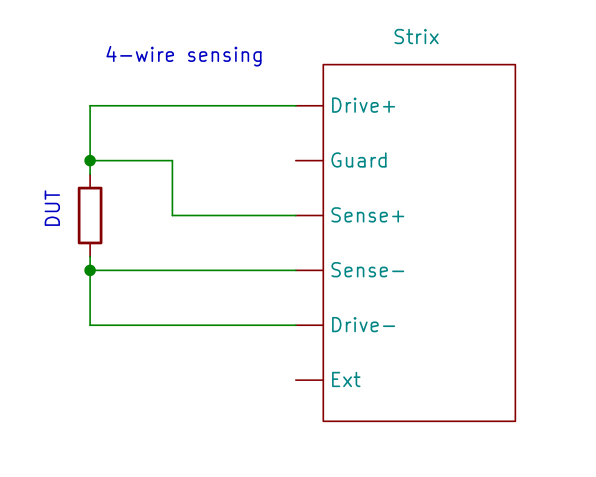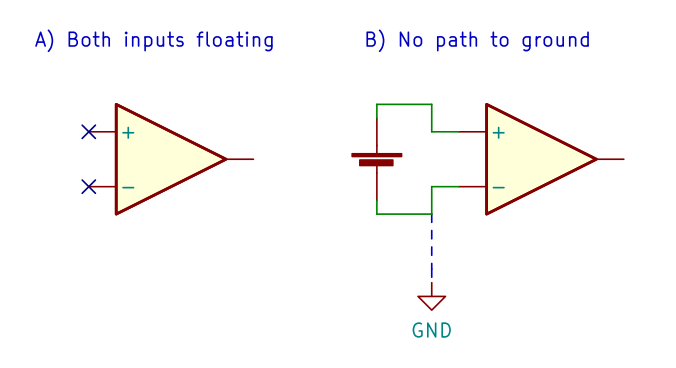Four wire sensing - Alshain-Oy/Strix GitHub Wiki
Four-wire sensing
Four-wire sensing (also know as 4-terminal sensing, Kelvin connection) is a method for reducing errors caused by wiring in measurements. As the name implies, 4-wire sensing uses four measurement leads, two for current and two for measuring voltage difference. When the voltage difference is measured (using the sense leads) right at the device under test, voltage drop caused by lead resistance doesn't affect the results.
Four-wire mode is enabled in Strix by writing to corresponding parameter:
# Set 4-wire mode on/off
smu.write( libStrix.PARAM_4WIRE_MODE, libStrix.ENABLE_4WIRE_MODE )
smu.write( libStrix.PARAM_4WIRE_MODE, libStrix.DISABLE_4WIRE_MODE )
When 4-wrire mode is enabled, the feedback of the drive amplifier is switched from Drive+ to the output of the sense diffrential amplifier so that when using 4-wire mode and voltage drive, output is driven to produce target voltage across sense inputs.
Connection diagram

Sense wires should be connected as close as possible to the measured device or component to minimise adverse effects from wiring.
Possible issues

In order to perform as intended, Sense inputs have very high input impendance so virtually no current flows in or out of them. This makes them susceptible to noise and prone to show errorenous voltages if not properly connected.
Two most probable issues are:
- Having one or more inputs floating (see A on the diagram), charge accumulation and electrical noise from surroundings cause fluctuating and noisy results, Sense inputs will not show zero volts when floating. This situation is commonly encountered when 4-wire probing is used and the probe needles are not in contact with the component (eg. when needles are lifted or having a bad contact).
- Not having a well defined path to ground (see B on the diagram). In contrast with more common (usually handheld) DMMs, 4-wire sensing doesn't have an internal resistor to ground (usually 10MΩ) and therefore a path to ground must be provided in order to have a valid reference level and measurement. If a path is not provided, measurements will be very noisy and most likely the Sense inputs will eventually drift to such levels that no meaningful voltage difference can be detected. Sense inputs will not show zero volts if shorted together when no path to ground is provided.